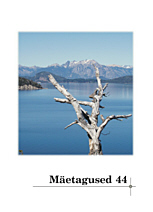Rahvalik muusika eesti rahvuskultuuri osana
Folksy Music as a Part of Estonian Folk Culture
Author(s): Guldzhahon JussufiSubject(s): Music
Published by: Eesti Kirjandusmuuseum
Keywords: circle song; folksy music; folksy song; player
Summary/Abstract: In this text I have attempted to mark the characteristics of the Estonian folksy music style and to outline the sequence connecting this style to the earlier folk music that is no longer in use. Reaching an undisputable result was not my goal, mostly due to the fact that I had to start from almost nothing. Musicologists work with folk music, while folksy music has been left for practitioners – artists and producers. In the context of culture in general, the lack of systematic overview of folksy music is a considerable gap. However, based on musicological methods alone, it is not possible to understand the impulses that have influenced the Estonians’ preferred music style to develop exactly into what we hear nowadays. Researches by scientists of music, society and literature, carried out according to a unified research program, could fill this gap. It can be stated that in the broad sense the Estonian folksy music is a result of extensive cultural influences. At the same time the loans, still happening today, do not change the basic principles of folksy music. Foreign elements intertwine with elements already present and start to look familiar in the process. This asserts that nations do not create their culture in a vacuum; instead it is an uncontrollable process in which many temporary ties emerge between different nations and whose interim results can considerably change a nation’s culture. Thus it happened that music of various origins blended into a folksy music style that is a mixture of mock songs, children’s songs, game songs, patriotic songs, dance songs and schlagers from before the Second World War, folk music from all parts of Europe, country music, works by classical composers and Estonian composers. This colourful assemblage constitutes an inseparable and organic part of folk culture. Spontaneous circles of influence have been functioning always and everywhere, but nowadays the changes in culture come about with greater intensity and they are easier to recognise and to observe.
Journal: Mäetagused. Hüperajakiri
- Issue Year: 2010
- Issue No: 44
- Page Range: 65-108
- Page Count: 44
- Language: Estonian

